|
St George's
Parish Church
of Lower Brailes
Warwickshire |


The Parish Church of St George is the largest in the Kington Hundred.
A Church has existed on this site since the 12th century. It has been
extended and restored on many occasions. St George's is a
Grade I Listed building dated from 1967.
The Church is heated by a Perkins pressurised pipework system, installed
in 1878 and is a rare example of a Victorian Perkins installation that has
retained its brickwork furnace and original pipework layout. The firm who
installed the system is most likely Baker Perkins whose name appears on
the Operating and Maintenance Instructions.
To read about the family and firm of A M Perkins & Son use this link


Remarkably the original estimate from A M Perkins & Son is still in the
church records. The system cost £218.00 exclusive of all associated
builders works such as construction of floor ducts.
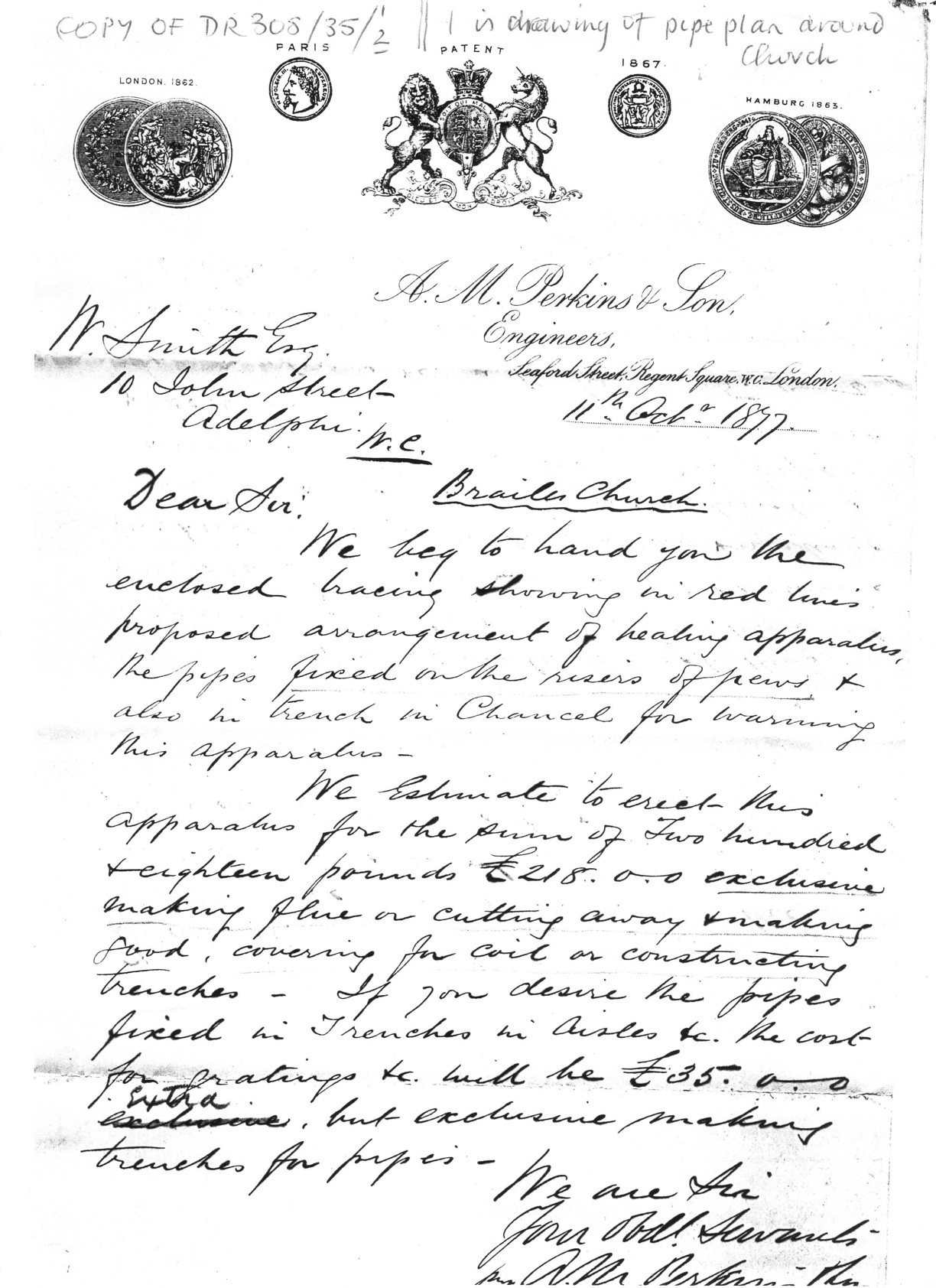

| In common with all
Perkins systems the pipework system in St George's is a
continuous single loop arrangement
arranged as four circuits including sinuous and spiral
pipe coils. With four
circuits this makes the pipework system large as with
each circuit being approx 500 feet making the total
distance 2000 feet or nearly half a mile. The pipework is generally routed along the sides of the Pew's timber plinths with sinuous coils fitted to the walls and Pews. A spiral coil heater is sited in the Chancel and two at the base of the Tower. |
Sinuous coil heater fitted to back of Pews |
Pipework fitted to front of Pews and around base of column |

Spiral coil heater fitted in Chancel |
Spiral coil heater fitted at base of Tower |

The furnace sited in the basement has had its internal pipe coils renewed on several occasions 1934, 1944, 1952
and 1975. In 1994 the brickwork furnace needed repair and in 2001 a complete rebuild of the brickwork furnace
and its pipework coils was considered necessary.
Total cost for this refurbishment was approx. £15,000
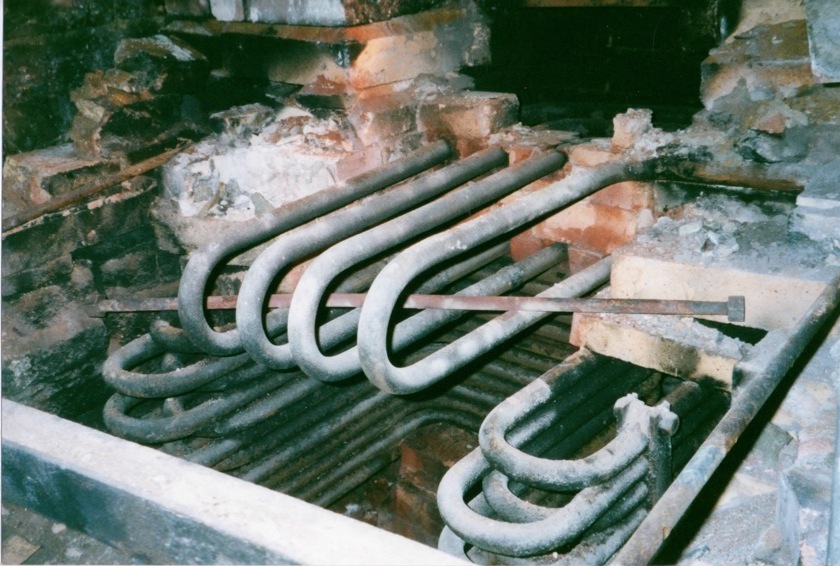 |
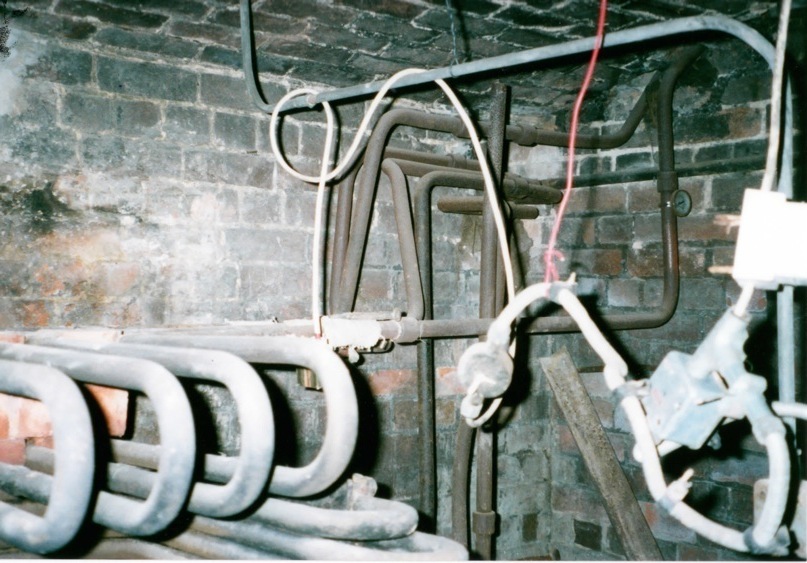 |
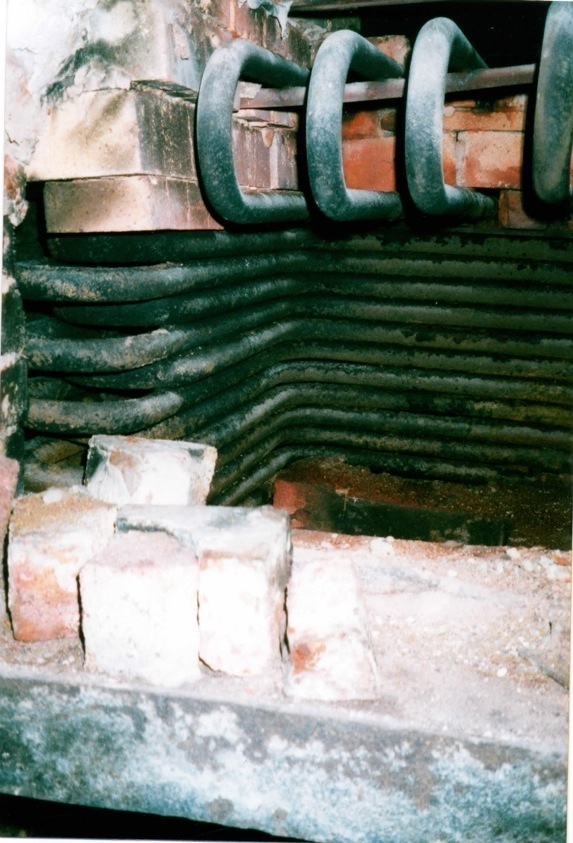 |
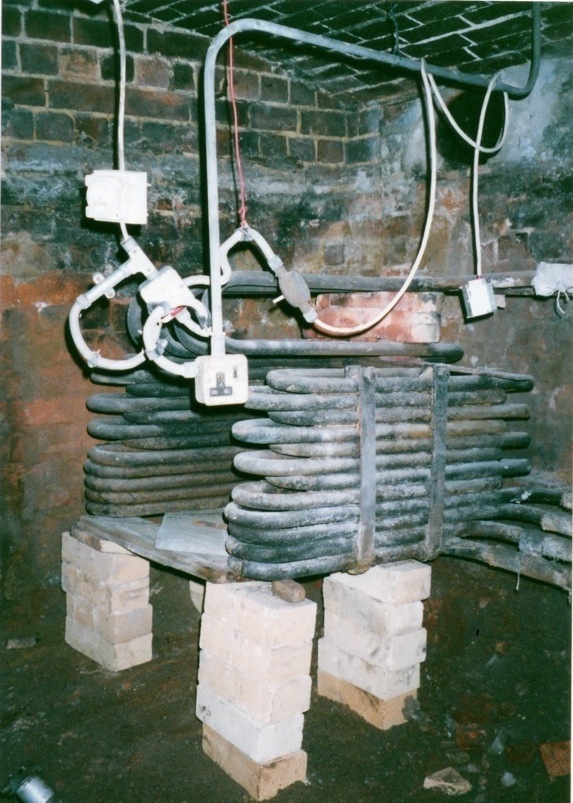 |
Photos of the deconstruction of the furnace provided by Rev Morgan
The furnace shown above in its finished condition. Originally fired by coal or coke it has now been converted to oil. The four flow and return circuits, and automatic time and temperature controls can be seen in the right hand picture. |

To accommodate the expansion of the water in the system as it increased in temperature,
five expansion tubes were needed and are installed in the base of the Tower.

An example of the craftsmanship of the Victorian artisan is the alignment of the
180 deg return bends at the end of the Pew plinth. This shows the skill of the
pipe fitter being capable of bending the tubing without collapsing the wall of the
pipe. To bend the tubing it would have needed to be at very high temperature
(red or white hot) to avoid weakening the pipe wall of the hydraulic tubing.

The Operating and Maintenance
instructions for the Perkins system.


